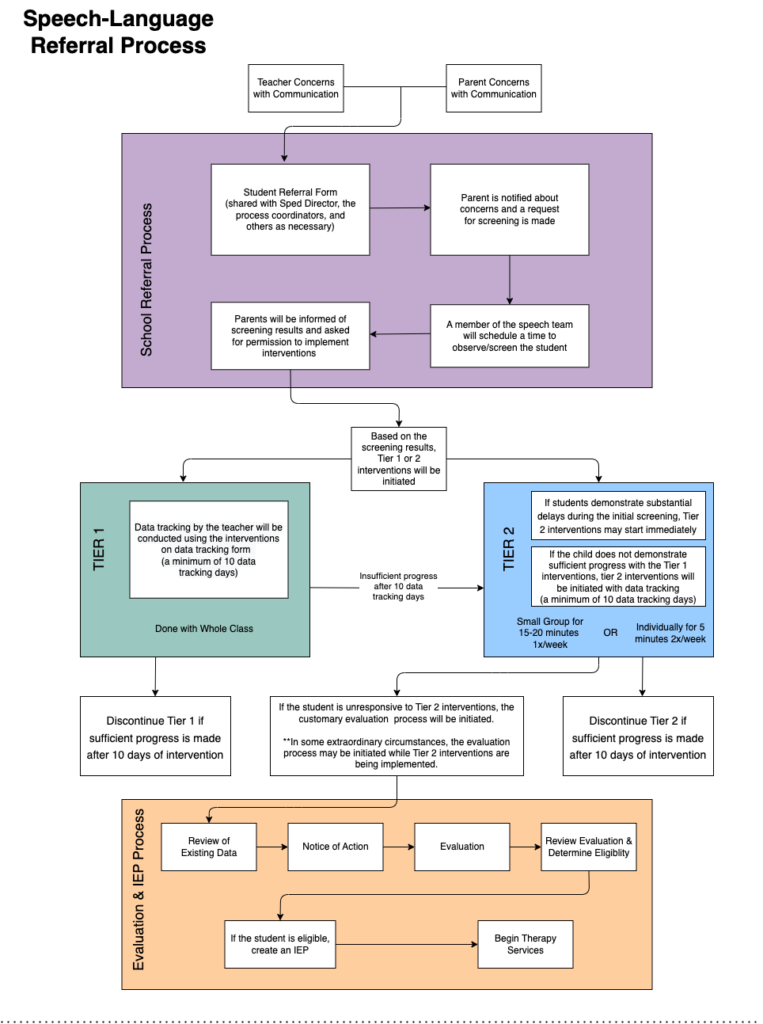When completing an evaluation, one question that must be answered when determining eligibility is What Intervention Strategies were Used Prior to Referral?
Currently, there are no provisions in the guidance from DESE that allows districts to forego interventions. However, there is no law or rules governing the model of intervention each district provides.
Components of RTI Decided by Each School District
- What interventions must be implemented?
- How long do the interventions have to continue?
- What constitutes significant progress as a result of interventions?
- Who can provide the interventions?
- Progress reporting during interventions
- Parent involvement in interventions
When state agencies such as DESE and other government entities create rules but provide little to no guidance surrounding the rules, the ambiguity requires each district to make decisions on how they interpret the rule.
It is best practice for districts to have a written plan on how the district will implement rules. Below is the Second Mile School Therapy approach to RTI for Speech and Language concerns.

Frequently Asked Questions:
What is the difference between Tier 1 and Tier 2 interventions?
Tier 1 interventions are provided by regular education teachers, and the interventions can be used with an entire class. For example, when helping students answer questions, the teacher could provide interventions by offering multiple-choice options for a student to answer the student’s questions. The entire class may benefit from such an intervention.
Tier 2 interventions are usually provided by a specialist, and the students are served in small groups or individually. The interventions should only last a short time (15-20 minutes in a small group or 5-10 minutes individually once or twice per week.)
Which Students Should Start at Tier 1?
- The child displays 1-3 articulation or phonology errors. The impact of the errors is mild to moderate on the student’s speech clarity.
- The child is stimulable for correct production with minimal cues.
- The child displays mild language concerns in 1-3 areas. Academic areas appear minimally impacted.
When do students go straight to Tier 2?
Students may proceed directly to Tier 2 intervention if they meet one or more of the following criteria:
- The child displays multiple articulation / phonological errors, greatly impacting speech intelligibility. Intelligibility is rated at 50% or less.
- The child displays red flags for childhood Apraxia of speech.
- The child displays moderate to severe language concerns in multiple areas, significantly impacting academic areas.
Are interventions a replacement for Special Education or other related services (i.e. Speech Therapy)?
No. Interventions are intended to be intense, short-term measures for helping a child increase their performance with an area of weakness affecting their academic performance. RTI should not be used to delay or deny a timely initial evaluation to determine if a child has a disability and, therefore, is eligible for special education and related services pursuant to an individual’s education program. (See the U.S. Department of Education Memo [PDF])
Isn’t ten days of intervention too short for a child to make progress?
No. Interventions are intended to be intense and only last for a short time. If the interventions are going to be effective, results should be seen in the data collection quickly. If measurable progress is not noted quickly, it is advisable to move to the next step in the intervention/evaluation process.
Some districts have chosen to extend each level of intervention up to eight weeks. Using this timeline, it is not only feasible, but likely that a child referred for a suspected disability at the end of September may not receive the help that an IEP offers until after Spring break. Essentially, that student has lost a year of Special Education services in this scenario.




